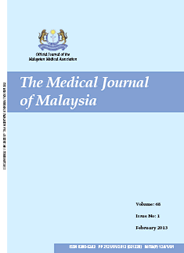MJM, Vol 70 Supplement 1 September 2015
Visual acuity status of military pilots in equator
region
Department of Social and Preventive Medicine, University of Malaya, Kuala Lumpur
ABSTRACT
Introduction: Good vision is among pilot’s specific needs. Therefore, visual acuity has been the basic standard assessment to determine pilot’s visual function and fitness to fly. With evidences of increasing number of military pilots with refractive errors in the western region, it is therefore important to acquire the information on visual acuity status among military pilots who routinely fly around the equator.
Method: Retrospective data of 147 pilots were used to determine the prevalence of visual acuity changes among three categories of RMAF pilot (fighter, transport and helicopter). Magnitudes of visual acuity changes were also recorded.
Results: Prevalence of visual acuity changes among RMAF operational pilots is 24.5%. Higher percentages of visual acuity changes are among transport pilots (Rt=31.3%, Lt=24.3%) followed by the helicopter (Rt/Lt=20.5%) and fighter pilots (Rt/Lt=14.7%). However, differences between them were not statistically significant (c2 = 3.832, p = 0.147). 63.9% of the pilots have visual acuity of 6/9 for right eye and 64.5% for left eye. Highest magnitude of recorded visual acuity status is 6/31. Pilots’ awareness level to correct their poor vision is high among fighter (80%) and helicopter pilot (75%) but low among transport pilot (44.4%).
Conclusion: Pilots from all categories of military aircraft have risk of developing visual acuity changes. Exposure to ionizing and non-ionizing radiation could be the possible cause that needs further evaluation. Review on current vision protection and vision conservation policy should be undertaken by the organisation to ensure damage to pilots’ vision can be minimised and vision readiness is optimised.
Keyword: Visual Acuity, military pilot, radiation
